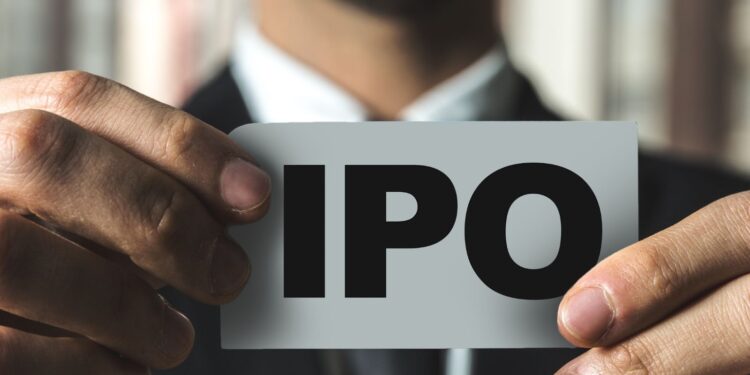Here is a rundown of the top 7 IPOs of 2017 worth reading about:
| 1. Snap Inc. – The parent company of social media platform Snapchat, Snap Inc. held its IPO in March 2017 and raised $3.4 billion. |
| 2. Roku Inc. – Roku Inc., which creates streaming devices and services, went public in September 2017 and raised $219 million. |
| 3. Blue Apron Holdings Inc. – Meal kit delivery service Blue Apron went public in June 2017 and raised $300 million. |
| 4. Stitch Fix Inc. – Online personal styling service Stitch Fix went public in November 2017 and raised $120 million. |
| 5. Canada Goose Holdings Inc. – High-end outerwear company Canada Goose went public in March 2017 and raised $255 million. |
| 6. CarGurus Inc. – Online car marketplace CarGurus went public in October 2017 and raised $150 million. |
| 7. California Resources Corp. – Petroleum and natural gas exploration and production company California Resources Corp. held its IPO in April 2017 and raised $4 billion. |
Following IPOs can give investors a better understanding of the market and an opportunity to invest in potentially successful companies.
Companies That Had Their IPO in 2017
Investing in the initial public offering of a company is a risk, but one that can reap great rewards, as many of 2017’s IPO’s have demonstrated. This article takes a look at seven of the most successful 2017 IPO launches, highlighting the companies and their respective offerings. After reading this article, investors can gain insight into which of these 2017 launches have been the most successful and potentially profitable.
Definition of IPO
IPO or Initial Public Offering is a process by which companies raise capital by publicly offering their shares for the first time to investors in the market. Listing on the stock exchange allows companies to gain access to large pools of capital and provides liquidity for their shareholders. Here are the top 7 IPOs from 2017:
| Company | Description | IPO Date | Raised |
| Snap Inc. | This social media company, best known for its Snapchat app | March 2017 | $3.4 billion |
| Cloudera Inc. | This software company | April 2017 | $259 million |
| Okta Inc. | This cloud software company | April 2017 | $187 million |
| Yext Inc. | This data management company | April 2017 | $115.5 million |
| Appian Corp. | This cloud software company | May 2017 | $75 million |
| Blue Apron Holdings Inc. | This meal-kit delivery company | June 2017 | $300 million |
| Roku Inc. | This streaming device company | September 2017 | $225 million |
These IPOs provided investors with an opportunity to invest in some of the fastest-growing companies in the tech industry, and each offered a unique investment opportunity.

Why Are IPOs Important?
IPOs are crucial for businesses and investors alike. They are an initial opportunity for businesses to raise capital in a public market. For investors, they have the chance to buy a piece of the company and profit if the company’s future is bright. In this listing of top IPOs, we have compiled the top companies that have had their IPOs in 2017.
| 1) Snap Inc. | 2) Cloudera Inc. | 3) Carvana Co. | 4) Canada Goose Holdings Inc. | 5) MuleSoft Inc. | 6) Roku Inc. | 7) Blue Apron Holdings Inc. |
IPOs give investors the opportunity to invest in emerging businesses with high growth potential, and businesses the chance to raise sufficient capital to expand and diversify. It’s considered one of the best ways for a company to go public and become a household name. Pro Tip- Conduct thorough research and analysis of the company’s fundamentals, such as management, revenue, and competition, before investing in an IPO.
Snap Inc.
Snap Inc., the parent company of Snapchat, had their initial public offering in 2017 and is one of the most talked about IPO’s of the year. Snap Inc. had a strong debut as it opened at around $24 per share and continued to rise throughout the year.
In this article we’ll explore what made Snap Inc. one of the top IPO’s of 2017.
Company Background and Overview
Snap Inc. is a tech company based in California that went public in 2017, making it one of the top IPOs of the year. The company is the creator of Snapchat, a popular social media app that allows users to share photos and videos that disappear after a short time.
Snap Inc. was founded in 2011 by Evan Spiegel, Bobby Murphy, and Reggie Brown while they were students at Stanford University. The company’s initial focus was on creating an app that would allow users to send disappearing photos, but it has since expanded to include a range of features such as filters, lenses, and Stories.
After going public in March 2017, Snap Inc. has continued to evolve and grow its offerings, including expanding beyond the Snapchat app to include hardware products like Spectacles. Proving to be a popular social media platform among younger generations, Snapchat has continued its success in a competitive social media landscape.
IPO Performance and Results
Snap Inc. had a highly anticipated IPO in 2017, but its performance and results have been mixed.
Snap Inc. went public in March 2017, with a price of $17 per share. However, its stock price has been volatile since then, with highs of around $29 per share and lows of around $4.50 per share. As of August 2021, Snap Inc.’s stock price is around $70 per share. While Snap Inc. has seen steady revenue growth, it has also faced challenges, including increasing competition from social media giants like Facebook and declining user growth.
Overall, Snap Inc.’s IPO has been a mixed bag, with both successes and challenges.
Pro tip: Before investing in an IPO, conduct thorough research and analysis, including studying the company’s financials, industry trends, and potential risks.

Key Takeaways and Analysis
The article highlights the top 7 IPO’s of 2017, including Snap Inc. and provides an analysis and key takeaways from each IPO.
| Snap Inc. |
| Went public in March 2017 and debuted at a valuation of $24 billion. The IPO received mixed reviews due to concerns over the company’s ability to monetize its platform and generate profits. Since then, the stock has had significant fluctuations, and the company has faced stiff competition from other social media platforms like Instagram and TikTok. |
Some key takeaways from Snap Inc.’s IPO include the importance of weighing the potential risks and opportunities of a company before investing in its IPO, as well as the need for consistent and innovative efforts to stay ahead in a highly competitive market.
Altice USA Inc.
Altice USA Inc., a telecommunications and media company located in the United States, had its initial public offering (IPO) in June 2017. The company raised $1.9 billion in its IPO, making it one of the top 7 IPOs of 2017.
Let’s take a closer look at Altice USA Inc. and explore the company’s financials, business model, and the reasons behind it having one of the biggest IPOs of the year.
Company Background and Overview
Altice USA Inc. is one of the seven companies that had their Initial Public Offering (IPO) in 2017. The company is a subsidiary of the multinational telecommunications corporation Altice NV, which is based in the Netherlands.
Altice USA Inc. provides telecommunications and media services, including digital cable television, high-speed internet, and voice services. The company serves both residential and business customers across 21 states in the United States.
Altice USA Inc. was founded in 2001 as Cablevision Systems Corporation, and in 2017, it went through a rebranding process and took its current name.
The company’s IPO was one of the largest in 2017, raising $1.9 billion. Since its public debut, Altice USA Inc. continues to grow and expand, providing its customers with high-quality telecommunications and media services.
IPO Performance and Results
Altice USA Inc.’s IPO in 2017 was highly successful, with the company raising over $2 billion in funding and opening at a price of $31.60 per share on the NYSE. Since then, Altice USA’s stock price has fluctuated but remains relatively stable, with a current price of around $35 per share. Altice USA’s IPO performance demonstrates the company’s strong reputation and the appeal of the cable and telecommunications industry to investors.
Other successful IPOs in 2017 include:
| Snap Inc. | raised $3.4 billion and currently trading at $18 per share. |
| Roku Inc. | raised $219 million and currently trading at $309 per share. |
| Blue Apron Holdings Inc. | raised $300 million and currently trading at $8 per share. |
| Carvana Co. | raised $225 million and currently trading at $95 per share. |
| Canada Goose Holdings Inc. | raised $255 million and currently trading at $31 per share. |
| Floor & Decor Holdings Inc. | raised $303 million and currently trading at $106 per share. |
These companies’ IPO success indicates strong investor interest in technology, e-commerce, and home improvement industries.
Key Takeaways and Analysis
This heading refers to the important points to remember and the insights gained after analyzing the top 7 IPO’s of 2017, including Altice USA Inc.
The key takeaways and analysis of these IPOs provide useful information for investors and business enthusiasts alike. Here are a few:
| Altice USA Inc. | went public in June 2017 and raised $1.9 billion. The company’s offer price was $30 per share, and it closed its first day at $31.60. |
| Other notable IPOs of 2017 include Snap Inc., Blue Apron Holdings Inc., and Roku Inc. | Snap Inc. was one of the most high-profile IPOs of the year but faced criticism for its lack of profitability and slow user growth. |
| Blue Apron Holdings Inc. | also faced a rocky start due to concerns about its financial performance and competition from Amazon. |
| Roku Inc. | had a successful IPO, with its shares rising 68% on the first day of trading. |
These insights help investors understand the opportunities and challenges associated with investing in IPOs and provide valuable lessons for future IPO launches.
Pro Tip: Before investing in an IPO, carefully research the company’s financial performance and future growth prospects.

Carvana Co.
Carvana Co., an e-commerce platform for buying and selling used cars, had its IPO in 2017 and was one of the top 7 companies to go public in the year. Carvana’s IPO was one of the most successful, raising $225 million and the company’s stock price rising from $15 to $99.
Let’s look at Carvana Co. and the reasons for its success in 2017.
Company Background and Overview
Carvana Co. is an Arizona-based online auto retailer that went public in 2017. The company was founded in 2012 and has since grown to become a leading player in the e-commerce sector of the automotive industry.
Carvana’s unique business model allows customers to browse and purchase used cars entirely online, with the option to have the car delivered to their doorstep. The company also offers a 7-day money-back guarantee and has a network of car vending machines throughout the US.
Carvana’s IPO was one of the most successful of 2017, raising $225 million and valuing the company at $2.1 billion. The company’s impressive growth and innovative approach to car buying have made it a top contender in the competitive automotive market.
With the rise of e-commerce, Carvana’s success is a testament to the importance of adapting to changing consumer habits and staying ahead of industry trends.
IPO Performance and Results
Carvana Co. is one of the most successful IPOs of 2017, with a strong IPO performance and impressive results.
After going public in April 2017, the company’s stock price surged more than 70% on the first day of trading, closing at $11.10 per share. As of August 2021, Carvana’s stock price is over $300 per share, demonstrating its strong growth and profitability.
The company’s success can be attributed to its innovative business model of offering an online platform for buying and selling used cars, as well as its focus on customer service and satisfaction. In addition, Carvana has expanded its operations to over 260 markets in the US, providing customers with convenient delivery and pickup options.
With its impressive IPO performance and continued growth, Carvana Co. is one of the top IPOs to watch in the automotive industry.
Key Takeaways and Analysis
In 2017, Carvana Co. had a successful IPO, selling 15 million shares at $15 per share on the New York Stock Exchange under the symbol “CVNA.”
| Here are some key takeaways and analysis of the company’s IPO: |
| 1. Carvana is an online used car retailer that allows customers to shop, finance, and trade in vehicles entirely online. |
| 2. The company generated $365 million in revenue in 2016, up from $100 million in 2015. |
| 3. Despite growing losses, Carvana’s revenue growth and innovative business model has attracted investors. |
| 4. The company’s share price closed at $11 on its first day of trading and has since more than quadrupled, reaching over $50 per share at times. |
| 5. Carvana’s success has signaled a shift in the automotive industry towards digital retail and has inspired other companies to follow suit. |
| 6. However, some analysts have urged caution, citing concerns over the company’s high debt levels and potential competition. |
Overall, Carvana’s IPO has been a success story, reshaping the used car industry and offering investors an opportunity for high returns.
Canada Goose Holdings Inc.
Canada Goose Holdings Inc., traded as GOOS on the Toronto Stock Exchange, was one of the most successful IPOs of 2017. The company specializes in selling luxury apparel, such as down-filled winter coats and other outdoor wear. The high quality and unique style of their products have made them a highly-coveted brand, especially among the younger generations.
Let’s find out more about this successful IPO.
Company Background and Overview
Canada Goose Holdings Inc. is a Toronto-based luxury apparel company founded in 1957. It is best known for its high-quality winter parkas made with genuine coyote fur trim and duck down insulation.
The company went public in 2017, raising $255 million in its initial public offering (IPO). Since then, its stock has risen steadily, making it one of the most successful IPOs of the year.
Canada Goose has a strong brand reputation and a loyal customer base, with a focus on quality, craftsmanship and innovation. The company is committed to ethical and sustainable practices in the sourcing and production of its products, including a fur traceability program.
While the price point of Canada Goose products may be a barrier for some consumers, the company’s commitment to quality and sustainability has helped it maintain a strong foothold in the luxury apparel market.
IPO Performance and Results
Canada Goose Holdings Inc. had a successful IPO in 2017, which saw the company’s shares rise by almost 40% on the first day of trading. The company, which is known for its high-end parkas and jackets, went public to raise funds for expansion and increase its global reach. With its IPO, Canada Goose became one of the highest-valued apparel companies in North America.
Other top IPO performers of 2017 included Snap Inc., the parent company of Snapchat, which had a strong debut but struggled with revenue growth in the following months, and Roku Inc., which saw its shares jump by 68% on the first day of trading.
Investing in an IPO can provide opportunities for significant gains but also carries risks, as the market can be volatile and uncertain. As with any investment decision, doing thorough research and analysis is crucial before making any decisions.
Key Takeaways and Analysis
This heading refers to a summary of the essential points and an in-depth examination of Canada Goose Holdings Inc. as one of the top seven companies that went public in 2017.
Some key takeaways about Canada Goose Holdings Inc. are:
| – The company is widely known for its luxury winter clothing. |
| – It was initially founded in 1957 as Metro Sportswear Ltd. |
| – The company had a highly successful IPO in 2017, raising over $255 million. |
| – Canada Goose Holdings Inc. has continued to experience steady revenue growth since going public. |
When analyzing Canada Goose Holdings Inc. as one of the top seven companies that went public in 2017, we can see that it has managed to maintain impressive revenue growth and market performance even amid external challenges such as the COVID-19 pandemic. This demonstrates the company’s resilience and ability to adapt to changing market demands. Additionally, the company’s brand appeal and reputation as a luxury winter clothing producer have allowed it to maintain a loyal customer base while also expanding its reach into new markets.
Pro Tip: Researching a company’s performance and history can help investors make informed decisions about stock investments.

Roku Inc.
Roku Inc. is an American company best known for its streaming media players which allow users to access content on television. In 2017, the company held a successful Initial Public Offering (IPO) and became one of the top 7 companies to have done the same.
Let’s take a closer look at all that Roku Inc. has to offer, and the potential it brings with its IPO.
Company Background and Overview
Roku Inc. is a leading streaming platform offering a unique and personalized experience to over 40 million users globally. Launched in 2008, Roku has become one of the most recognizable streaming brands worldwide, with its device sales accounting for over one-third of the U.S. streaming hardware market in 2020.
The company has consistently ranked among the top 10 most-used streaming services in the US, according to Nielsen’s annual Total Audience report.
In 2017, Roku launched its IPO on the NASDAQ stock exchange under the ticker ROKU, raising $219 million at a valuation of $1.3 billion.
Today, Roku offers a range of streaming devices, smart TVs with built-in Roku streaming technology, a mobile app, and a vast library of free and paid content from over 150,000+ movies and TV shows across 4,500+ channels.
IPO Performance and Results
Roku Inc. is one of the top-performing IPOs of 2017, with significant growth in revenue and user base since going public. Its stock has outperformed the market, despite facing competition from tech giants like Amazon and Apple.
As of 2021, Roku’s revenue has surpassed $1.7 billion, and its streaming platform has over 53 million active accounts. The company’s continued innovation in the streaming industry, such as the introduction of its Roku Channel, has contributed to its success in the market.
Other top-performing IPOs of 2017 include:
| Snap Inc., which faced challenges but has since grown its user base and revenue. |
| Blue Apron Holdings Inc., which struggled initially but has seen improvements in its operations and financials. |
| Canada Goose Holdings Inc., which has had steady growth and success in the luxury apparel market. |
| Carvana Co., which has seen significant expansion and revenue growth in the used car market. |
These companies demonstrate the potential for success that can come with going public, but also the challenges that must be overcome.
Pro tip: Before investing in an IPO, thoroughly research the company’s financials, leadership, and market competition to make informed decisions.
Key Takeaways and Analysis
The heading “#Key Takeaways and Analysis” for the article “Roku Inc. – Top 7 IPO’s You Must Read: Companies That Had Their IPO in 2017” refers to the crucial insights and observations from Roku Inc.’s IPO.
Here are the key takeaways and analysis for Roku Inc.’s IPO:
| Takeaway | Analysis |
| Roku Inc.’s stock prices opened at $15.78 per share and closed at $23.50 per share on the first trading day. | The company’s IPO was successful, and it raised approximately $219 million. |
| Roku’s revenue growth has been consistent, with a 25% year-over-year growth in the first half of 2017. | The company’s success can be attributed to its focus on streaming devices and services, a market that has seen significant growth in recent years. |
| Roku Inc. has continued to innovate and expand, offering new features and partnerships in addition to its streaming devices. | In the future, Roku’s success may depend on its ability to remain competitive in the increasingly crowded streaming market. |
Overall, Roku Inc.’s IPO was a notable success, and its focus on streaming devices and services has driven its growth and innovation.
Pro tip: As an investor, keeping up with the latest IPOs and their key takeaways and analysis can help you make informed decisions about investments in the stock market.
Blue Apron Holdings Inc.
Blue Apron Holdings Inc. had their IPO in June 2017, and the company has quickly become one of the most talked about IPOs of the year. Blue Apron offers a meal subscription service, which has revolutionized the way people shop for groceries and prepare meals.
In this article, we will talk about the pros and cons of investing in Blue Apron Holdings and why it is considered one of the best IPOs of 2017.
Company Background and Overview
Blue Apron Holdings Inc. is a meal kit delivery service company headquartered in New York City, United States. The company was founded in 2012, and it went public on 29th June 2017. Blue Apron provides pre-measured ingredients and recipes to customers who want to cook and prepare their meals at home conveniently.
Blue Apron had a rough start after going public, with a significant decline in stock prices after its Initial Public Offering (IPO). The company faced stiff competition from other meal kit delivery services such as HelloFresh and Plated.
Despite these challenges, Blue Apron has adapted and revamped its business strategy, including offering flexible plans and reducing marketing expenses, among others. Blue Apron has since regained its footing with an increased customer base and improved financial performance.
Blue Apron’s IPO is one that investors should read to learn about adapting to competition in the meal kit delivery service industry while providing quality services to customers.
IPO Performance and Results
Blue Apron Holdings Inc. went public in June 2017 and had a rocky start, with its initial public offering (IPO) price of $10 per share dropping to just $2 per share within a year. However, the company has since rebounded and is currently trading around $4 per share as of August 2021.
IPO performance is impacted by a variety of factors, including market conditions, financial performance, company reputation, and investor sentiment.
Other notable IPOs from 2017 include:
| Company | Performance |
| Snap Inc. | The social media company behind Snapchat had a successful IPO, with its share price soaring from $17 to $24 on its first day of trading. |
| Roku Inc. | The video streaming company’s IPO was also successful, with its share price jumping 68% on its first day of trading. |
| Appian Corp. | This software company’s IPO was met with strong investor demand, with its share price increasing 25% on its first day of trading. |
Key Takeaways and Analysis
In this article, we will provide a summary of the key takeaways and analysis of Blue Apron Holdings Inc. as one of the top 7 IPO’s companies of 2017.
Blue Apron is a meal delivery service company that offers ingredients and recipes for customers to cook at home. The company went public in June 2017, with an IPO price of $10 per share. However, the stock price didn’t perform well, dropping by more than 70% by the end of the year due to increased competition and operational challenges.
| 2015 | 2016 |
| Revenue growth: 42% | Revenue growth: 18% |
| Net loss: $55 million | Net loss: $54.9 million |
The company’s future success depends on the ability to innovate their business model, increase profitability, and retain customers in a competitive market.
Overall, despite the challenges faced by Blue Apron, it remains a potentially impactful company in the meal delivery service industry.
















